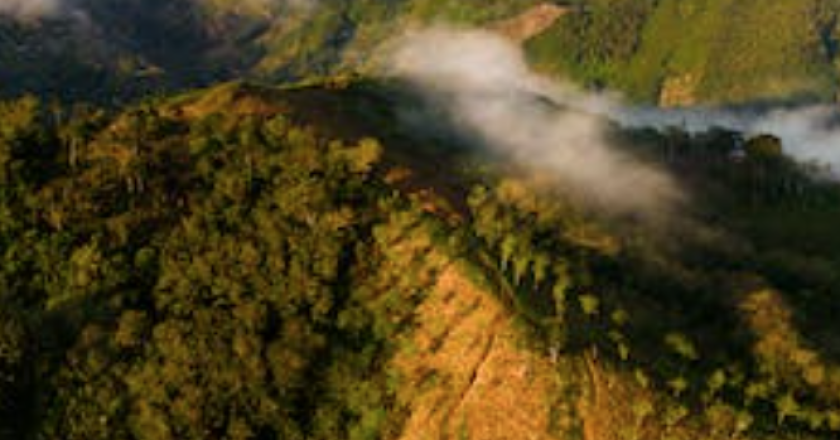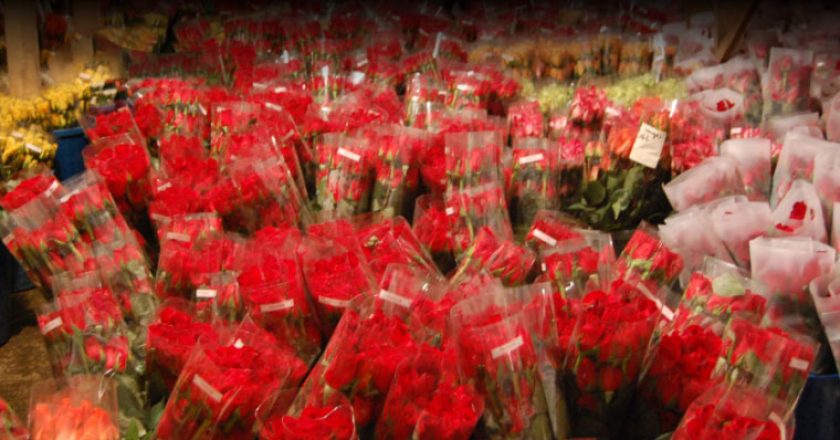Author and conservationist, Dr. Nick Haddad will be joining us the evening of October 15th to talk about conservation biology and rare butterflies. I sat with him to chat about bombs, indictments, and burning wetlands… you know, butterfly basics.
How did you end up studying butterflies?
I leapt at an opportunity to go to Guatemala to do work with butterflies, which I knew nothing about. I was dropped off in Guatemala with three things: a tent, an old mountain bike, and a butterfly net, and was told the catch everything I could. That’s all I did. I collected thousands of butterflies over a 2-year period, but I thought I was going to study birds. I ended up in grad school I had an aspiration to do a habitat fragmentation experiment, but butterflies were a better model organism for my habitat fragmentation work since I was working with hectare plots, rather than the tens of thousands of hectares that would be needed for birds.
Let’s step back to that tent in the Guatemala forest. How do you store thousands of butterflies?
The reason I ended up there is that there were a few other tents near me from a group that was ironically studying birds, and they had a field shack. In this building I could take the butterflies, dry them, and put them in glassine envelopes, and you can fit quite a few butterflies in these stacks of envelopes. I had a collaborator in Guatemala City and every few months I would go to Guatemala City and either bring them to him or send them back to the United States.
You did end up working on habitat fragmentation experiments, can you talk through what that is?
I worked with US forest service to create a network of habitat fragments that were all a hectare in size, but I was asking how can we overcome the negative impacts of habitat fragmentation? The experiment was to create landscape corridors connecting the fragments. This was – and still is – the world’s biggest experiment to test the effects of landscape corridors.
We started looking at the impacts of corridors on dispersal, and some of the corridors are acting the way they are supposed to as highways for plants and animals. But then I went on to ask how they impact populations and diversity. And I have shown that corridors have a huge increase in plant diversity and that increases over the course of 20 years.
What is it about a corridor that allows all of this to happen?
For butterflies, they bounce off edges of fragments and they end up in the corridor and then follow it to another patch. The birds go to the edges to perch and eat and they will go from the middle back to the tree – the middle – to the tree – and they do that over and over until they make it down the corridor. The corridors funnel wind, too, so wind-disperse seeds travel down the corridor. But the next question is, how does that lead to higher diversity? We think the diversity of plants is related to their ability to disperse through corridors. We have a whole new area of research on plant traits that allow them to use corridors.
You’re currently conducting research in Fort Bragg (with graduate student Elsita Kiekebusch) What is it like there?
That is what launched me into rare butterflies. I’m a conservation biologist at heart so when the army called to ask about a problem they were having with an endangered butterfly, well, I jumped right in. The interesting thing with the St. Francis Satyr butterfly and what attracted me to it was that it lives in wetlands along streams. So the habitat that gets between the wetlands are riparian corridors, and it was a chance to think of corridors for a species that actually mattered in conservation as an endangered butterfly.
The St. Francis Satyr only occurs on Fort Bragg army installation and nowhere else. Within the installation, it’s mainly found in the artillery ranges, so it’s this crazy case where a butterfly that is endangered lives in seemingly the most inhospitable damaged environments. But they are actually some of the most beautiful places in North Carolina.
Because people can’t go into artillery ranges?
That’s one reason, but another reason is that the bombs ignight annual fires which keeps the wetlands open. So that’s one reason, the other is that the butterflies require beaver ponds, and there are healthy beaver populations in the artillery ranges. Those three things combined create environments healthy for the butterfly and other endangered plants, birds, and there’s no place anywhere else in North Carolina or the world. Artillery places are the place to be!
How did the St. Francis Satyr butterfly come to be endangered?
It was determined to be endangered right away. It was discovered at Fort Bragg by a soldier in training, an 18 year old guy who happened to have a butterfly collection as a kid. When he found it, it was thought to be one population numbering 100 butterflies, but it wasn’t considered endangered. It’s a bit of a story, but the next person who discovered these butterflies was one of many indicted under the Lacey Act as one of many people trafficking rare butterflies, trying to force them closer to extinction to increase the worth of their collections.
That’s what really precipitated the butterfly to be listed as endangered to be better protected. It was already rare, but this was a threat, and it needed protection. And why did it become rare? Because people pulled fire from the landscape and they pulled beavers off the landscape, intensely over the past 50 years.
How do you monitor their populations?
Once we know where they are, we are out there everyday of the field season, in the summer months. Now we count as many as we see, then we convert those counts to population sizes. We have also caught and marked butterflies with letters/numbers and then released them, then we can get a rigorous estimate of their population size, but we found that the counts are correlated with these mark/recapture numbers.
So when did you decide to write The Last Butterflies?
I realized I had all of these interesting stories about rare butterflies, but beyond that there are themes that wind through all of the rarest butterflies. So it became a way to try to look more panoramically to the messages for biology and conservation biology in general.








